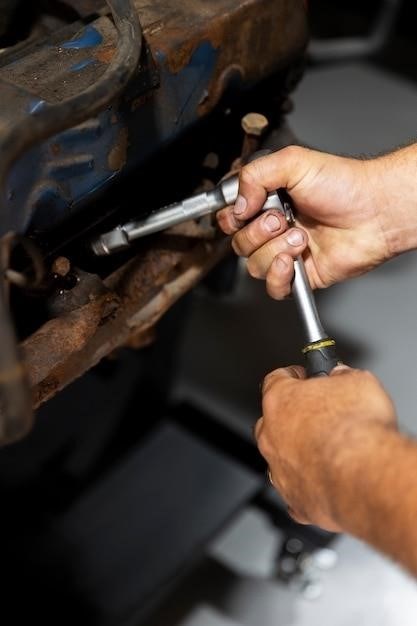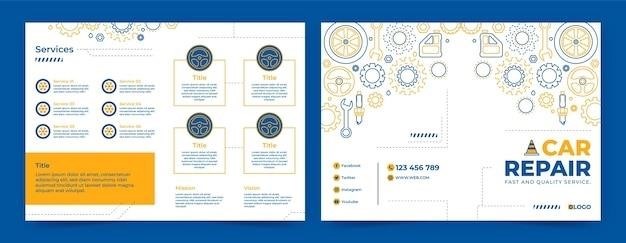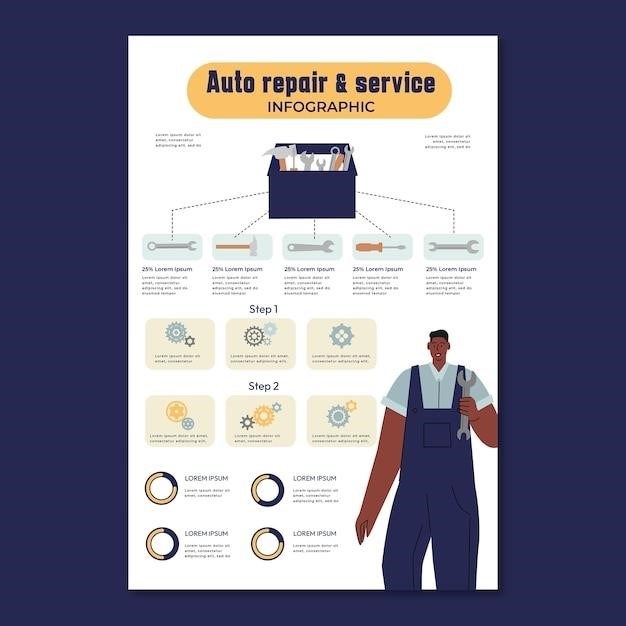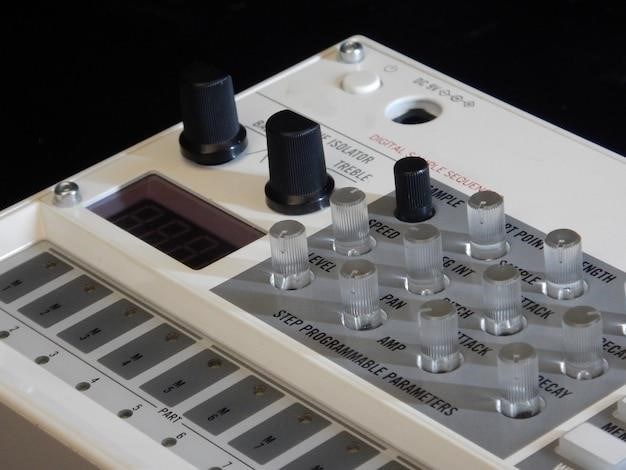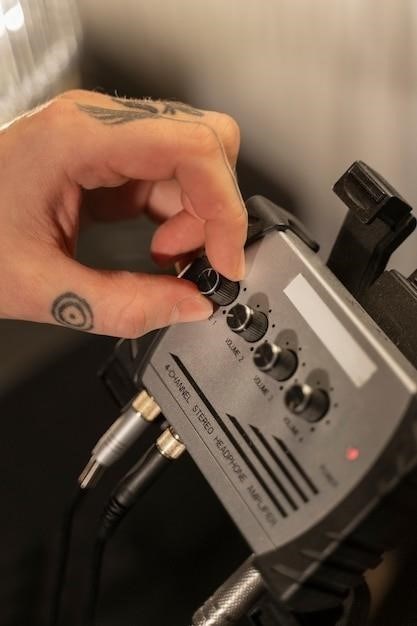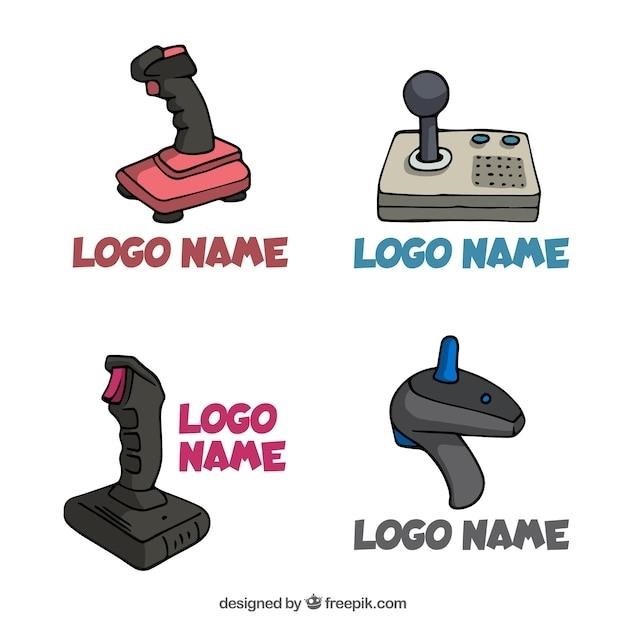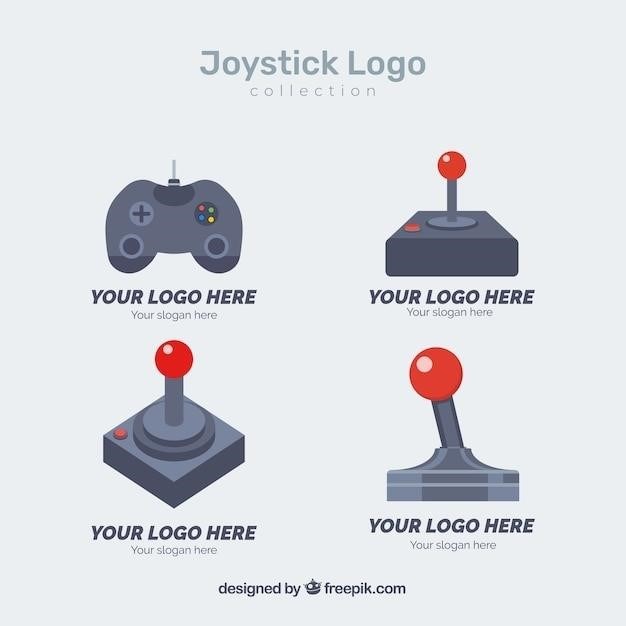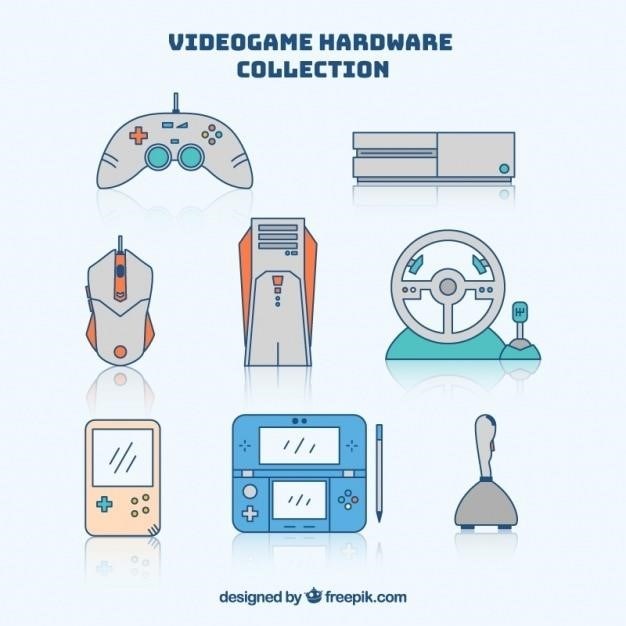ReliOn Blood Pressure Monitor Manuals⁚ A Comprehensive Guide
This guide provides a complete overview of ReliOn blood pressure monitor manuals, covering various models like the BP200, BP200W, BP300, and BP300W․ Learn how to download manuals, understand readings, troubleshoot issues, and properly use your monitor for accurate results․ Manuals are available in PDF format online․

Downloading ReliOn Blood Pressure Monitor Manuals
Finding the correct manual for your specific ReliOn blood pressure monitor model is crucial for accurate operation and interpretation of readings․ Many online resources offer ReliOn manuals as downloadable PDF files․ Websites like ManualsLib are a good starting point; search using your model number (e․g․, BP200, BP300W, HEM-741CRELN4) to locate the appropriate document․ Ensure the website is reputable before downloading to avoid potential malware․ Alternatively, the manufacturer’s website may also host downloadable manuals; check their support or downloads section for your model․ Once downloaded, you can save the PDF to your computer or print it for easy access․ Always verify that the downloaded manual matches your device’s model number to avoid confusion and ensure you have the correct instructions․ If you have difficulties locating your manual online, consider contacting ReliOn customer support for assistance․ They might be able to provide you with a digital copy or direct you to a reliable download source․
Available Manuals for Different ReliOn Models
ReliOn offers a range of blood pressure monitors, each with its own unique features and corresponding manual․ The availability of manuals varies depending on the specific model and its age․ Common models include the ReliOn BP200 and BP200W, which are often arm-cuff models with automatic inflation․ These generally have instructions covering basic operation, reading interpretations, and troubleshooting common errors․ The ReliOn BP300 and BP300W are also popular choices; their manuals will likely detail similar functions but may include additional features or slightly different operational procedures․ Some older models, like those with manual inflation, may have less readily available online manuals․ Always double-check the model number printed on your device before searching for a manual to ensure compatibility․ The model number is typically located on the back or underside of the monitor itself․ The manuals usually cover topics such as battery installation, cuff application, memory functions, and error message interpretations, specific to each model’s capabilities․ Remember that using the correct manual is essential for accurate readings and safe device operation․
Understanding Blood Pressure Readings and Units
ReliOn blood pressure monitors typically display readings in millimeters of mercury (mmHg), the standard unit for blood pressure․ A blood pressure reading consists of two numbers⁚ systolic and diastolic pressure․ Systolic pressure is the higher number, representing the pressure in your arteries when your heart beats․ Diastolic pressure is the lower number, indicating the pressure in your arteries when your heart rests between beats․ For example, a reading of 120/80 mmHg indicates a systolic pressure of 120 mmHg and a diastolic pressure of 80 mmHg․ Understanding your blood pressure readings is crucial for managing your health․ Your ReliOn manual will likely include a chart or guide explaining the different blood pressure categories (e․g․, normal, elevated, high blood pressure (hypertension), etc․)․ It’s important to consult your doctor or healthcare provider to interpret your readings and determine if any adjustments to your lifestyle or medication are necessary․ Do not attempt self-diagnosis or treatment based solely on your monitor’s readings․ The monitor itself provides only a measurement; medical interpretation is vital for appropriate action․
ReliOn BP200 and BP200W Manuals⁚ Key Features
The ReliOn BP200 and BP200W blood pressure monitors, while sharing similarities, also have distinct features detailed in their respective manuals․ Both models utilize the oscillometric method for blood pressure measurement, providing readings of systolic and diastolic pressure, along with pulse rate․ The manuals will guide you through battery installation (typically AA batteries), cuff application, and the interpretation of display symbols and potential error messages․ The BP200W, being a wrist monitor, will have specific instructions regarding proper wrist placement for accurate readings, emphasizing maintaining the device at heart level․ Both manuals emphasize the importance of regular calibration and maintenance․ Key differences may include variations in memory capacity for storing readings, averaging functions, and the inclusion of additional features like irregular heartbeat detection․ Consult the individual manuals for comprehensive details on specific functionalities and troubleshooting steps for each model․ Remember that consistent and correct usage, as detailed in the manual, is essential for reliable blood pressure measurements․
ReliOn BP300 and BP300W Manuals⁚ Detailed Instructions
The ReliOn BP300 and BP300W manuals provide comprehensive instructions for operating these automatic blood pressure monitors․ Both manuals will cover the basics of device setup, including battery installation (often requiring AA batteries) and date/time setting․ Detailed steps for applying the cuff correctly are crucial, particularly emphasizing proper placement to ensure accurate readings․ The manuals will explain the display symbols, such as those indicating irregular heartbeat or movement error, and how to interpret the resulting blood pressure and pulse readings․ The BP300W manual will include specific instructions for using the wrist cuff, focusing on proper positioning and the avoidance of movement during measurement․ Both manuals will include sections on memory functions, allowing you to store and recall multiple readings․ Detailed troubleshooting guides address common issues, like error messages or inaccurate readings, providing solutions to rectify them․ Furthermore, information on cleaning and maintaining your device to prolong its lifespan will be included․ The manuals might also include information on using an AC adapter for power, if applicable to the model․ Always refer to the specific manual for your model for precise operational procedures․
Manual Inflation vs․ Automatic Inflation Models
ReliOn offers blood pressure monitors with both manual and automatic inflation systems․ Manual inflation models, like the ReliOn HEM-412CREL, require you to manually pump up the cuff to the desired pressure using a bulb․ This usually involves inflating the cuff until the pulse is no longer detected and then slowly releasing the air while the device measures your blood pressure․ The manual process necessitates careful attention to the instructions to avoid inaccurate readings or discomfort․ Automatic inflation models, such as the ReliOn BP300 and BP300W, automate this process․ These devices inflate and deflate the cuff automatically, simplifying the measurement process and minimizing the chance of user error․ The automatic models often feature more advanced features, such as memory storage for multiple readings and average calculations․ The choice between manual and automatic inflation often depends on personal preference and physical capabilities․ Manual models may be preferred by some users who want more control over the inflation process while others may find the automation of automatic models more convenient and user-friendly․ Both types utilize the oscillometric method to measure blood pressure, but the user interaction differs significantly․
Interpreting Display Symbols and Error Messages
Understanding the symbols and error messages displayed on your ReliOn blood pressure monitor is crucial for accurate readings and troubleshooting․ Common symbols include a heartbeat symbol indicating the monitor is taking a measurement, a movement error symbol alerting you to potential inaccuracies due to body movement during measurement, and an irregular heartbeat symbol flagging a detected irregular heart rhythm․ The manual will provide a detailed explanation of each symbol, including what they mean and how to address potential issues․ Error messages, often accompanied by a specific code, can indicate problems such as low battery, incorrect cuff placement, or a malfunctioning sensor․ Consulting your manual’s troubleshooting section is essential for resolving these errors․ For example, a low battery symbol might indicate a need for battery replacement, while a movement error could mean the user needs to remain still during the measurement process․ If you encounter persistent errors or are unsure about the meaning of a specific symbol or message, refer to your ReliOn blood pressure monitor’s manual or contact customer support for assistance․ Correct interpretation ensures accurate blood pressure monitoring and effective management of potential health concerns․
Troubleshooting Common Issues and Solutions
Your ReliOn blood pressure monitor manual provides a dedicated troubleshooting section to address common problems․ Issues such as inaccurate readings might stem from incorrect cuff placement, movement during measurement, or interference from external factors․ The manual will guide you through steps to ensure proper cuff application, emphasizing the importance of positioning the cuff at heart level and maintaining stillness․ Inaccurate readings can also be caused by a malfunctioning device; the troubleshooting guide outlines steps to check battery levels, the integrity of the air tube, and the overall functionality of the unit․ If you experience error messages, the manual will provide interpretations and solutions; for instance, a “low battery” message necessitates battery replacement․ Problems with inflation or deflation might indicate issues with the air pump; the manual offers checks and potential solutions, suggesting contacting customer service if the problem persists․ Remember, regular maintenance, as outlined in the manual, is key to preventing many issues․ This includes cleaning the cuff and monitor regularly and storing it properly․ Always consult the manual first before seeking external assistance; it contains comprehensive troubleshooting steps and solutions for most common problems encountered with ReliOn blood pressure monitors․
Battery Installation and Power Supply Options
The ReliOn blood pressure monitor manual provides detailed instructions on battery installation and power supply options, varying slightly depending on the specific model․ Most models utilize standard AA or AAA batteries, with the manual clearly illustrating the correct polarity (+ and -) for insertion into the battery compartment․ The number of batteries required will be specified, typically four AA batteries for upper arm models and fewer for wrist models․ The manual will guide you through opening the battery compartment, usually involving a latch or sliding mechanism, and correctly inserting the batteries to avoid damage to the device․ Beyond battery power, some ReliOn monitors offer an AC adapter option for continuous operation․ The manual outlines how to connect the AC adapter, ensuring it’s securely plugged into both the monitor and a wall outlet․ Important safety precautions regarding AC adapter usage will be highlighted, emphasizing the importance of using only the authorized adapter provided by the manufacturer to avoid electrical hazards․ The manual also usually includes information on battery life and low battery indicators․ A low battery symbol appearing on the display prompts users to replace the batteries to maintain accurate readings and prevent unexpected shutdowns during critical blood pressure checks․ Always refer to the specific instructions in your ReliOn monitor’s manual for precise details on battery installation and AC adapter usage․

Setting Date, Time, and User Profiles
Your ReliOn blood pressure monitor manual will guide you through setting the date, time, and user profiles for accurate record-keeping․ The process typically involves pressing a designated “SET” button, often accompanied by up and down buttons to adjust values․ The manual will provide step-by-step instructions to navigate through the year, month, day, and time settings, ensuring the device accurately timestamps your blood pressure readings․ It’s crucial to set the date and time correctly before using the monitor for the first time to ensure the accuracy of stored data․ Many ReliOn models allow for multiple user profiles, usually two (User A and User B), enabling different individuals to use the monitor and have their readings stored separately․ The manual clearly explains how to select or switch between user profiles, typically using a dedicated switch or button․ This feature is helpful for households with multiple users, allowing for easy identification and tracking of individual blood pressure trends․ Each user’s readings are stored independently, avoiding confusion and ensuring personalized data analysis․ The precise method for setting date, time, and user profiles will vary slightly depending on the specific ReliOn blood pressure monitor model․ Consult your individual model’s manual for exact instructions and illustrations to avoid errors․ Accurate configuration of these settings is essential for meaningful data interpretation and health management․
Proper Cuff Application and Measurement Techniques
Accurate blood pressure readings depend heavily on correct cuff placement and measurement techniques․ Your ReliOn blood pressure monitor manual will detail the proper method for applying the cuff․ Ensure the cuff is positioned correctly on your bare upper arm, above the elbow, with the lower edge about an inch above the elbow crease․ The artery marker on the cuff should be aligned with the brachial artery, typically found on the inner side of your arm․ The manual will likely include diagrams and illustrations to assist with proper placement․ The cuff should be snug but not too tight; you should be able to fit two fingers comfortably underneath․ An improperly fitted cuff can lead to inaccurate readings․ Before taking a measurement, sit comfortably with your back straight, feet flat on the floor, and your arm resting on a table at heart level․ Avoid talking or moving during the measurement process, as this can affect the results․ Your ReliOn manual will explain the step-by-step process of initiating the measurement, which typically involves simply pressing a button․ The manual emphasizes the importance of remaining still and relaxed to obtain accurate readings․ Following these procedures ensures consistent and reliable results, aiding in effective blood pressure monitoring and management․ Remember, consistent and correct measurement technique is key to accurate monitoring․ Refer to your specific ReliOn model’s manual for detailed illustrations and instructions․
Maintaining and Caring for Your ReliOn Blood Pressure Monitor
Proper maintenance ensures the longevity and accuracy of your ReliOn blood pressure monitor․ Your manual will provide specific cleaning instructions; generally, this involves gently wiping the device with a slightly damp cloth․ Avoid using harsh chemicals or abrasive cleaners that could damage the monitor’s surface or internal components․ Never immerse the device in water or other liquids․ Regularly inspect the cuff for any signs of wear and tear, such as cracks or fraying․ A damaged cuff can compromise the accuracy of your readings․ Replace the cuff if necessary, following the instructions in your manual or contacting customer support․ Proper battery care is crucial․ Refer to your manual for the correct battery type and replacement procedure․ Avoid leaving batteries in the monitor for extended periods if not in use, as this can lead to leakage and damage․ Store your ReliOn monitor in a cool, dry place, away from direct sunlight and extreme temperatures․ Avoid dropping or subjecting the monitor to significant shocks․ Protect it from dust and moisture․ Periodically check the monitor’s display for any signs of malfunction, such as erratic readings or error messages․ If you notice any inconsistencies or problems, consult your manual’s troubleshooting section or contact ReliOn customer support for assistance․ Following these guidelines will help maintain the accuracy and reliability of your ReliOn blood pressure monitor over time․






